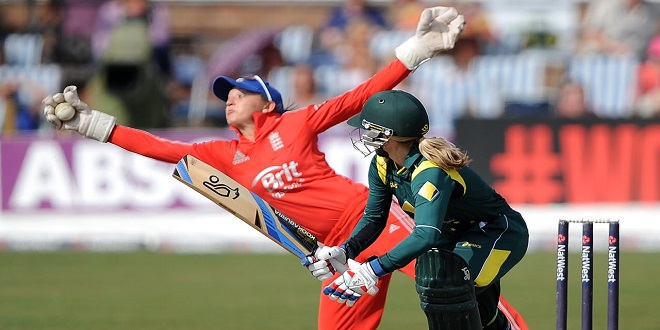
Catching On to Why Fielding Matters
One of the most famous sayings in cricket is ‘Catches win matches’. Quite often, the team that drops the fewest catches in a match is triumphant. Bowlers work very hard to get the batsmen to make a mistake by hitting the ball in the air rather than along the ground, and when they are successful they expect those catching chances to be taken.
Understanding Fielding Positions
Excluding the bowler and wicket-keeper – more about wicket-keepers later in this chapter – nine players field in a team. However, the outfield is a very large open space. In truth, only a few fielders cover a great big space, and the available fielders can fill only a few of the possible positions.
Nothing stops a captain from being inventive and asking a fielder to stand in a non-standard fielding position. The captain may spot something in the technique of the batsman which indicates that the ball is likely to go to the part of the field to which the fielder has been moved.
Close catching fielding positions
Close catching positions are close to the wicket. If the ball is struck by the edge of the bat, the ball is likely to fly up in the air in these positions.
If the ball strikes the bat and is then caught by a fielder before it bounces, then the batsman is out. The player is out whether or not the ball hits gloves, pads or any part of the kit or anatomy after hitting the bat. If the ball strikes the glove while that glove is holding the bat and flies to a fielder and is then caught without bouncing, that too leads to a dismissal.
However, if the ball hits the pads or any part of the anatomy, and does not make contact with the bat before or after doing so, then a catch should not be awarded by the umpire.
The pace of the bowler determines how close the fielders in catching positions stand in relation to the batsman. The faster the bowler the farther the delivery should travel in the air, and the farther away the wicket-keeper, slip and gully fielders should stand.
Run-saving fielding positions
Fielders in run-saving positions are there to stop the batting side from scoring runs. They usually stand around 20–25 metres from the batsman, giving them some time to move to their left or right to dive and stop the ball if it comes in their direction. If they are quick enough to the ball, they can deter the batsman from attempting a run
The location of run-saving fielding positions has a lot to do with angles. Captains try to gauge how the batsman will see the field – finding the gaps into which the player may strike the ball. The captain attempts to plug those gaps by moving the fielders into those areas.
Higgs Domino Rp offers exciting gameplay and a vibrant community. With its various game modes and social features, players can enjoy endless entertainment. The game’s popularity is a testament to its engaging experience. Join the fun and connect with players worldwide through Higgs Domino Rp.
Last word
Fielders who stand close to the batsman – say in the slips or a bat and pad position – have less time to move and set themselves to take a catch. Therefore, as the bowler delivers they crouch and cup their hands together. The idea is that they are already set for a catch when the ball is delivered.





